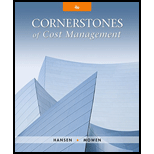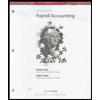
Sixty employees (all CPAs) of a local public accounting firm eat lunch at least twice weekly at a very popular pizza restaurant. The pizza restaurant recently began offering discounts for groups of 15 or more. Groups would be seated in a separate room, served individual bowls of salad costing $2 each, pitchers of root beer costing $3 each (each pitcher has a five-glass capacity), and medium, two-topping pizzas for $10 (10 slices each). The food would have to be ordered in advance.
Thirty of the CPAs commit to eating three slices of pizza, three glasses of root beer, and one bowl of salad [a consumption pattern of (3,3,1)]. The other 30 are more hearty eaters and commit to seven slices of pizza, two glasses of root beer, and one bowl of salad [a consumption pattern of (7,2,1)]. Each member of the group must pay an assessed amount for the lunch.
Required:
- 1. Determine the total number of pizzas, pitchers of root beer, and salads that must be ordered for the 60 employees.
- 2. One of the CPAs offered to determine the amount that each should pay. He suggested that the easiest way is to assign the average cost to each person eating in the group. Based on this suggestion, how much would each CPA pay for lunch?
- 3. One CPA objected to using average cost, noting that half of the CPAs are much lighter eaters than the other half. Based on the large differences in consumption behaviors, he suggested forming two groups: one for the light eaters and one for the heavier eaters. Calculate the lunch cost for each CPA for each group. Discuss the analogy to formation of focused value streams in a manufacturing environment. Calculate the cost that would be assigned using ABC. What does this tell you?
1.
Compute the total number of each item to be ordered.
Explanation of Solution
Value stream: The value stream refers to all the processes involved in the production of a product from the starting point to the finished product, till it reaches the hands of the customer.
Compute the number of pizzas to be ordered:
Compute the number of pitchers of root beer to be ordered:
Compute the number of bowls of salad to be ordered:
2.
Compute the average cost of lunch to be paid by each CPA.
Explanation of Solution
Value stream: The value stream refers to all the processes involved in the production of a product from the starting point to the finished product, till it reaches the hands of the customer.
In the single product value stream all the products being produced are assumed to belong to one value stream.
Compute the total cost of lunch:
| Particulars | Number of Units (A) | Cost per Unit (B) | Amount |
| Pizza | 30 | $10 | $300 |
| Root Beer | 30 | $3 | $90 |
| Salad | 60 | $2 | $120 |
| Total Cost | $510 |
Table (1)
Compute the average cost of lunch:
3.
Compute the average cost of lunch to be paid by each CPA, if the employees were grouped on the basis of their eating pattern and compare the result with the ABC costing.
Explanation of Solution
Focused value stream: The focused value stream refers to all the processes involved in the production of one particular product from the starting point to the finished product, till it reaches the hands of the customer.
Activity-based costing: It is a method that helps in finding the activities performed by a company and it tracks the indirect costs to the activities of the company that consumes resources.
Compute the total lunch cost for Group A:
| Particulars | Number of Units (A) | Cost per Unit (B) | Amount |
| Pizza | 9 | $10 | $90 |
| Root Beer | 18 | $3 | $54 |
| Salad | 30 | $2 | $60 |
| Total Cost | $204 |
Table (2)
Working Notes:
Compute the number of pizzas to be ordered by Group A:
Compute the number of pitchers of root beer to be ordered by Group A:
Compute the number of bowls of salad to be ordered by Group A:
Compute the average cost of lunch for Group A:
The average cost of lunch for Group A is $6.80.
Compute the total lunch cost for Group B:
| Particulars | Number of Units (A) | Cost per Unit (B) | Amount |
| Pizza | 21 | $10 | $210 |
| Root Beer | 12 | $3 | $36 |
| Salad | 30 | $2 | $60 |
| Total Cost | $306 |
Table (3)
Working Notes:
Compute the number of pizzas to be ordered by Group B:
Compute the number of pitchers of root beer to be ordered by Group B:
Compute the number of bowls of salad to be ordered by Group B:
The unit material cost for Model A is $80 and for Model B is $30.
Compute the average unit conversion cost:
Compute the average cost of lunch for Group B:
The average cost of lunch for Group B is $10.20.
Compute the ABC cost of each item:
| Particulars | Cost per Unit (A) | Number of Units (B) | Amount |
| Pizza | $10 | 10 | $1.00 |
| Root Beer | $3 | 5 | $0.60 |
| Salad | $2 | 1 | $2.00 |
| ABC Cost | $3.60 |
Table (4)
The unit cost as per ABC costing is $3.60.
Using the ABC cost compute, the average lunch cost for Group A:
| Particulars | Number of Units (A) | Cost per Unit (B) | Amount |
| Pizza | 3 | $1.00 | $3 |
| Root Beer | 3 | $0.60 | $2 |
| Salad | 1 | $2.00 | $2 |
| Total Cost | $6.80 |
Table (5)
The average lunch cost for Group A, using ABC costing is $6.80.
Using the ABC cost compute, the average lunch cost for Group B:
| Particulars | Number of Units (A) | Cost per Unit (B) | Amount |
| Pizza | 7 | $1.00 | $7 |
| Root Beer | 2 | $0.60 | $1 |
| Salad | 1 | $2.00 | $2 |
| Total Cost | $10.20 |
Table (6)
The average lunch cost for Group B, using ABC costing is $10.20.
Thus, under both focused value stream approach and ABC costing the costs are similar and very accurate.
Want to see more full solutions like this?
Chapter 15 Solutions
Cornerstones of Cost Management (Cornerstones Series)
- Financial Accountingarrow_forwardApsara Beverages Co. uses process costing to account for the production of bottled sports drinks. Direct materials are added at the beginning of the process, and conversion costs are incurred uniformly throughout the process. Equivalent units have been calculated to be 21,600 units for materials and 18,000 units for conversion costs. Beginning inventory consisted of $13,500 in materials and $7,200 in conversion costs. May costs were $62,400 for materials and $72,000 for conversion costs. The ending inventory still in process was 7,000 units (100% complete for materials, 50% for conversion). The cost per equivalent unit for materials using the weighted-average method would be____.helparrow_forwardTidewell Corporation charges manufacturing overheadarrow_forward
- nonearrow_forwardG-Phone Technologies, Inc. has an equity multiplier of 1.58, total asset turnover of 1.63, and a profit margin of 9 percent. What is the company's ROE? (Do not round intermediate calculations. Enter your answer as a percent rounded to two decimal places (e.g., 32.16).) Answerarrow_forwardWhat is the company roe?arrow_forward
 Cornerstones of Cost Management (Cornerstones Ser...AccountingISBN:9781305970663Author:Don R. Hansen, Maryanne M. MowenPublisher:Cengage Learning
Cornerstones of Cost Management (Cornerstones Ser...AccountingISBN:9781305970663Author:Don R. Hansen, Maryanne M. MowenPublisher:Cengage Learning Intermediate Accounting: Reporting And AnalysisAccountingISBN:9781337788281Author:James M. Wahlen, Jefferson P. Jones, Donald PagachPublisher:Cengage Learning
Intermediate Accounting: Reporting And AnalysisAccountingISBN:9781337788281Author:James M. Wahlen, Jefferson P. Jones, Donald PagachPublisher:Cengage Learning



